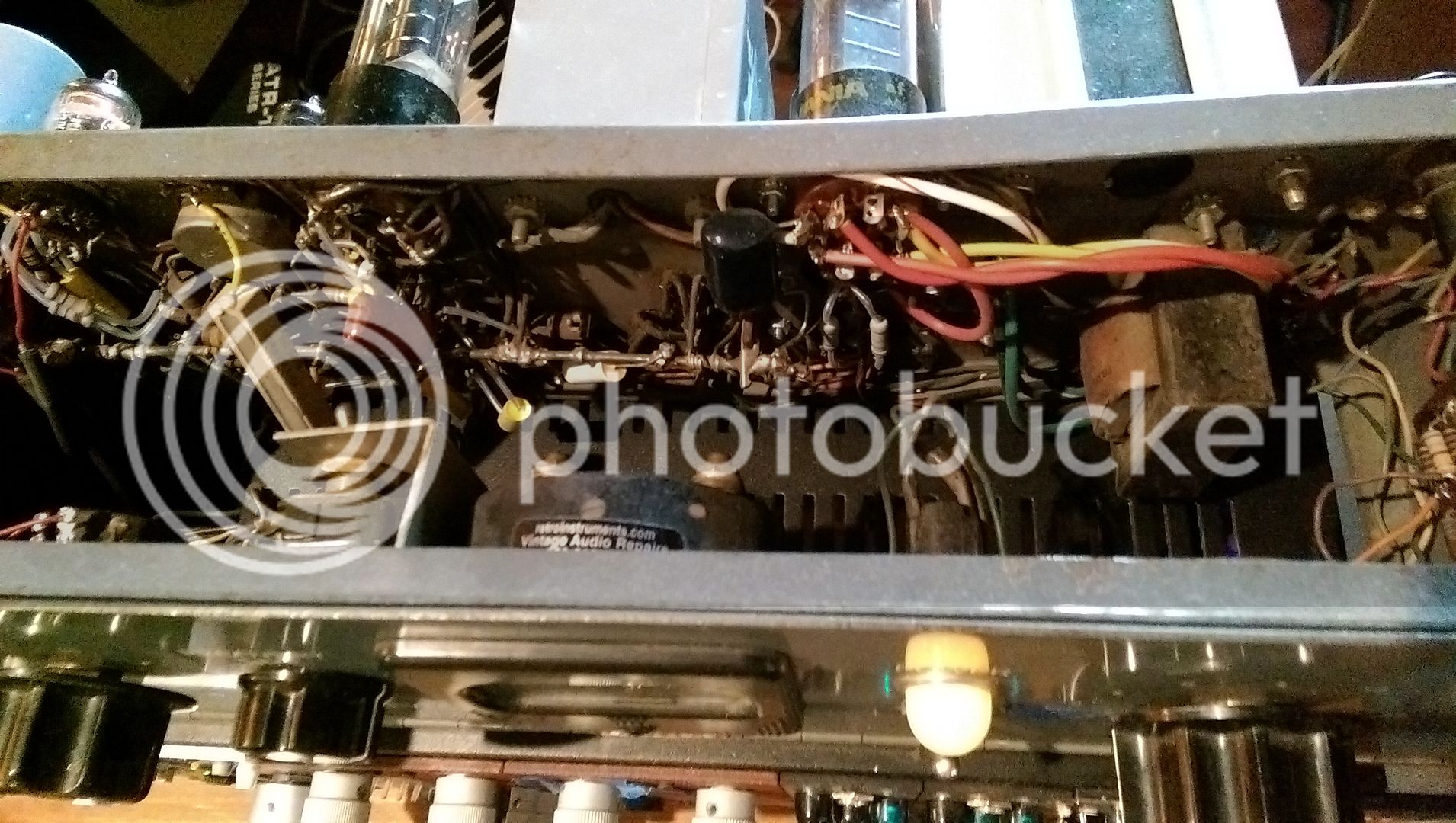Biasrocks
Well-known member
I'm going to attempt a PTP build of the Gates Sta-Level, the 1960's schematic version.
http://www225.pair.com/audio/waltzingbear/Schematics/Gates/Sta_Level.htm
I would like to follow the original layout as closely as possible and I'm wondering if anyone has or can take some clear inside shots of the Sta Level. I've managed to uncover a couple of inside shots, but they are not totally clear with respect to the layout around the input section, transformer, 6386 and 12AT7 as it is covered by the cabling to the input level control.
Also, I've noticed that the schematic includes a pad before the input transformer, but in the pictures I've seen I can't seem to find those 5 resistors. It looks like the input goes directly to the input transformer. Was this optional?
Any help or tips would be greatly appreciated.
Pics here
http://analogaudiorepair.com/category/repaired/
Regards,
Mark
http://www225.pair.com/audio/waltzingbear/Schematics/Gates/Sta_Level.htm
I would like to follow the original layout as closely as possible and I'm wondering if anyone has or can take some clear inside shots of the Sta Level. I've managed to uncover a couple of inside shots, but they are not totally clear with respect to the layout around the input section, transformer, 6386 and 12AT7 as it is covered by the cabling to the input level control.
Also, I've noticed that the schematic includes a pad before the input transformer, but in the pictures I've seen I can't seem to find those 5 resistors. It looks like the input goes directly to the input transformer. Was this optional?
Any help or tips would be greatly appreciated.
Pics here
http://analogaudiorepair.com/category/repaired/
Regards,
Mark




